Best
Tuner for Beginners
-
Overall: High-Visibility Note & String Name For Quick Tunings
-
Best Feature: A Wide Range Of Pitch Detection Covers Any String Instrument
-
TedScore™: 9/10
Best
Innovative Tuner
-
Overall: Sensitive Piezo Pickup Registers A Super Accurate Reading
-
Best Feature: Use With Smartphones - Just Plug Into The Headphone Input
-
TedScore™: 8/10
Best
Clip-on Tuner
-
Overall: The compact size and clip-on design make it easy to use and transport
-
Best Feature: Bright, Easy-To-Read Color Display
-
TedScore™: 9/10
Eager to make your cello come alive with music? How do you get a cello in tune?
Well, tuning your cello ensures your music hits all the right notes. Whether you’re a seasoned pro or just starting out, understanding how to tune your cello is essential.
In this article, we’ll look closer at the standard tuning for a cello and some alternative tuning methods to help you find the perfect sound.
So, let’s dive in and get your cello sounding pitch-perfect!
Understanding the Cello
The Parts of a Cello
The cello consists of several parts: the body, neck, fingerboard, bridge, soundpost, and peg box. The cello’s body is the largest and most recognizable part, usually made of wood. The fingerboard is located on the neck of the cello and is where the musician places their fingers to create different notes.

The bridge is a small, curved piece of wood that sits on the cello’s body and holds the strings. The soundpost is a thin, vertical piece of wood that sits inside the cello’s body and helps to transfer the vibrations from the strings to the cello’s body.
Finally, the peg box is located at the top of the cello’s neck and holds the four tuning pegs there, which are used to adjust the tension of the strings and tune the instrument.
How a Cello Produces Sound
When you play a note on the cello, the bow (or your fingers) vibrate the strings. These vibrations travel through the bridge and soundpost into the cello’s body. The cello’s body amplifies these vibrations and produces the beautiful, rich sound we associate with the instrument.
You can change the vibrating string length by pressing down on the fingerboard with your fingers to produce different notes. This changes the frequency of the vibrations and produces a different pitch.
In addition to changing the string’s length, you can adjust the cello strings” tension by turning the tuning pegs in the peg box. This allows you to tune the cello to different notes and create different sounds.
Tuning Basics
Why Tuning is Important
Tuning is essential because it ensures that your cello produces the correct pitch. When your cello is out of tune, it can produce a discordant, unpleasant sound to the ear. Plus, playing with an out-of-tune cello can make it difficult to play in tune with other musicians, which can be frustrating and detrimental to your performance.
Tuning by Ear
Tuning by ear is a traditional method of tuning your cello. It involves using your ears to determine if the pitch is correct. To tune your cello by ear, tune the A string to an external reference pitch, such as a tuning fork or a piano.
Once you have tuned the A string, you can tune the other strings by playing the open string and comparing it to the A string. Adjust the pegs or fine-tuners as necessary until the pitch is correct.

Using a Digital Tuner
Using a digital tuner is a modern and convenient method of tuning your cello. Digital tuners are small devices that use a microphone to detect the pitch of your cello and display it on a screen.
To use a digital cello tuner, clip it onto your cello’s bridge and play each string. The tuner will display whether the pitch is too high, too low, or in tune. Adjust the pegs or fine-tuners as necessary until the pitch is correct.

Tuning the Cello
Tuning Pegs
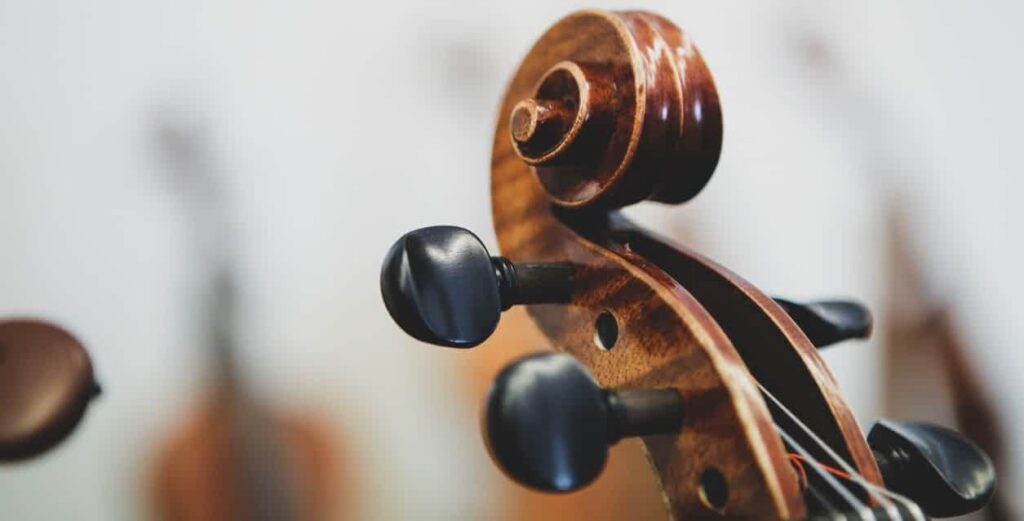
The tuning pegs are located at the cello’s top and control the stringed instrument’s pitch. To tune your cello, turn the pegs clockwise to tighten the strings and raise the pitch or counterclockwise to loosen the strings and lower the pitch.
Being gentle when turning the pegs is important to avoid breaking the strings. If you over-tighten the strings, they may snap, and you’ll need to replace them.
Once you’ve tuned the string to the correct pitch, push the peg inwards to stick it in place. The lowest peg on the cello’s left side adjusts the C string, and the pegs ascend from left to right.
Fine Tuners
Fine tuners are located at the tailpiece of the cello and are used in order to make small adjustments to the pitch of the strings. They’re especially useful for making small changes to the pitch after you’ve used the tuning pegs.
To use the fine tuners, turn them clockwise to raise the pitch and counterclockwise to lower the pitch. It’s important to make small adjustments and not to overtighten the strings.
Using a Tuning Fork
A tuning fork is a small metal instrument that produces a specific pitch when struck. It’s a useful tool for tuning your cello, especially if you don’t have access to a piano or other instrument to tune to. To use a tuning fork, strike it against a hard surface and hold it close to the cello’s bridge. The tuning fork’s pitch should match the open, stringed instruments you’re trying to tune.
Once you’ve tuned one string using the tuning fork, you can use that string as a reference to tune the other strings. For example, you can tune the A string to match the pitch of the open E string when the E string is played at the fifth fret.
Perfecting Your Tuning
Adjusting the Fine Tuners
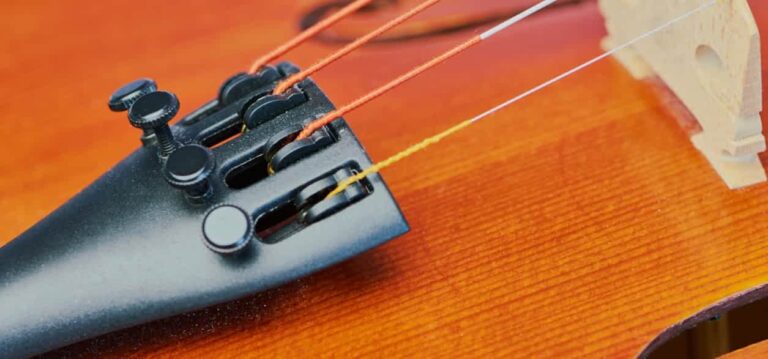
One of the most critical aspects of tuning a cello is adjusting the fine tuners. These small knobs located at the bottom of all the strings allow you to make small adjustments to the pitch of each string. Here are a few tips for using the fine tuners:
This will make it easier to fine-tune the strings with the fine tuners.
If the string is too high, turn the fine tuner counterclockwise to lower the pitch. If the string is too low, turn the fine-tuner clockwise to raise the pitch.
Turning a fine tuner too much can cause the string to snap or go out of tune quickly.
This will help you maintain a consistent pitch and avoid putting too much tension on the strings.
Working with an Instructor
Another way to improve your tuning skills is to work with an instructor. An experienced cello teacher or instructor can help you develop your ear and provide feedback on your tuning technique.
Schedule regular lessons with your instructor to practice tuning. Consistent practice is key to improving your tuning skills. You ask your instructor to provide feedback on your technique. This will help you identify areas to improve and develop better habits.
Be open to feedback and willing to make changes to your technique. Remember, the goal is to improve your tuning skills and become a better cello player.

Maintaining Your Cello's Tuning
Humidity and Its Effects

Changes in humidity can cause the wood of your cello to expand or contract, resulting in changes to the tension of the strings and the overall pitch of your instrument. To minimize the effects of humidity on your cello’s tuning, storing your instrument in a room with a consistent temperature and humidity level is important.
You can also use a hygrometer to monitor the humidity level in the room and a humidifier or dehumidifier to maintain a stable environment.
The Importance of a Soundpost

The soundpost is a small wooden dowel inside your cello, supporting the bridge and transferring vibrations from the strings to the instrument’s body. The position of the soundpost can affect the tone and tuning of your cello, so it’s important to ensure that it’s properly positioned.
If you suspect that your cello is not holding its tuning properly, it may be a sign that the soundpost needs to be adjusted. This should be done by a professional luthier, as it requires specialized tools and knowledge.
Our Recommended Cello Tuning Tools

PERFECT FOR: guitar, brass band or orchestra
FEATURES: A wide range of pitch detection covers any string instrument
OTHER INFO: High-visibility note & string name for quick tunings
Korg CA- 2 Guitar/Instrument Chromatic Tuner
When you check the price above, you’ll see there are loads of great places to buy this item. Our personal favorite is Gear4music.
It is the largest music retailer in the UK and fast becoming the most respected online music shop in the US too. Their customer service is excellent, they have competitive prices, really fast shipping, and usually have the longest guarantee.
Most professional musicians use Gear4music, so there is no reason why you shouldn’t too!
- Its compact body is slim, lightweight & stylish
- Offers quick and precise tuning process
- Approximately 200 hours of continuous use
- Has a quite small display screen
The professional musician who wrote this article combined many things,
from the product build, manufacturer’s reputation through to feedback
from other users, to create our famous TedScore™.
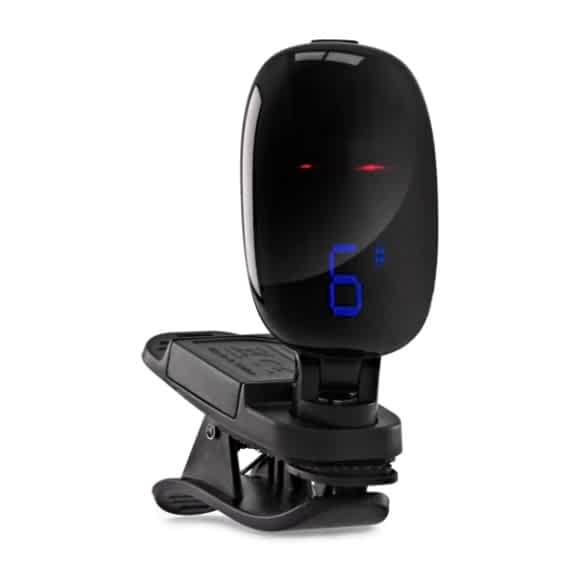
PERFECT FOR: guitars, basses, ukuleles, violins, mandolins, banjos, and cellos
FEATURES: Bright, easy-to-read color display
OTHER INFO: 360-degree swivel for easy viewing
SubZero Infinity Chromatic Clip-on Tuner
When you check the price above, you’ll see there are loads of great places to buy this item. Our personal favorite is Gear4music.
It is the largest music retailer in the UK and fast becoming the most respected online music shop in the US too. Their customer service is excellent, they have competitive prices, really fast shipping, and usually have the longest guarantee.
Most professional musicians use Gear4music, so there is no reason why you shouldn’t too!
- Built-in vibration sensor for accurate tuning in noisy environments
- Can be used with a variety of instruments
- The compact size and clip-on design make it easy to use and transport
- May not work well on instruments with non-standard shaped headstocks
The professional musician who wrote this article combined many things,
from the product build, manufacturer’s reputation through to feedback
from other users, to create our famous TedScore™.

PERFECT FOR: musicians who prefer a traditional, analogue tuning method
FEATURES: Fine-tuned to match an exact 440Hz standard pitch
OTHER INFO: The shaped handle provides optimal playability
John Walker Tuning Fork, A
When you check the price above, you’ll see there are loads of great places to buy this item. Our personal favorite is Gear4music.
It is the largest music retailer in the UK and fast becoming the most respected online music shop in the US too. Their customer service is excellent, they have competitive prices, really fast shipping, and usually have the longest guarantee.
Most professional musicians use Gear4music, so there is no reason why you shouldn’t too!
- Produces a strong, fundamental tone
- Made in the UK
- Requires some level of skill and practice to use it effectively
The professional musician who wrote this article combined many things,
from the product build, manufacturer’s reputation through to feedback
from other users, to create our famous TedScore™.
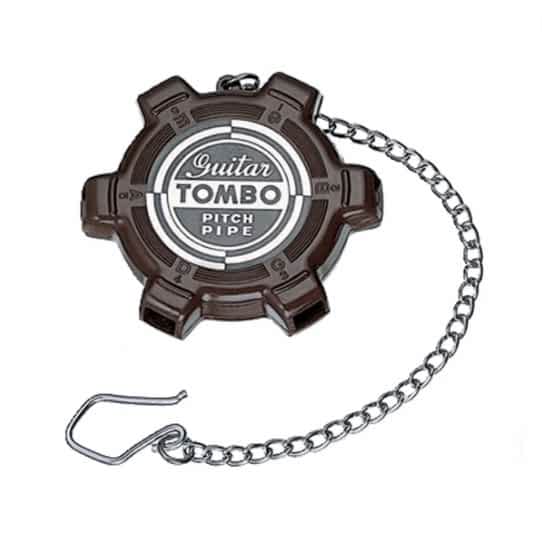
PERFECT FOR: travelling musicians
FEATURES: Everything you need to stay in tune
OTHER INFO: Clearly labelled E A D G B E pipes in a smooth plastic casing
Tombo Pitchpipe
When you check the price above, you’ll see there are loads of great places to buy this item. Our personal favorite is Gear4music.
It is the largest music retailer in the UK and fast becoming the most respected online music shop in the US too. Their customer service is excellent, they have competitive prices, really fast shipping, and usually have the longest guarantee.
Most professional musicians use Gear4music, so there is no reason why you shouldn’t too!
- Easy to use with the standard tuning for the guitar
- Comes with an attached chain
- Compact and portable pitch pipe
- Relies on the user's ability to match the pitch of the pipe to the corresponding note
The professional musician who wrote this article combined many things,
from the product build, manufacturer’s reputation through to feedback
from other users, to create our famous TedScore™.

PERFECT FOR: any instrument including strings, brass & wind
FEATURES: Use with smartphones - just plug into the headphone input
OTHER INFO: Sensitive piezo pickup registers a super accurate reading
Peterson PitchGrabber Active Clip-On Pickup
When you check the price above, you’ll see there are loads of great places to buy this item. Our personal favorite is Gear4music.
It is the largest music retailer in the UK and fast becoming the most respected online music shop in the US too. Their customer service is excellent, they have competitive prices, really fast shipping, and usually have the longest guarantee.
Most professional musicians use Gear4music, so there is no reason why you shouldn’t too!
- The large clip mechanism accommodates a variety of placements
- Excellent grip tension ensures optimum contact with the instrument
- Great for noisy environments
- Compact design - can be easily stored in a pocket or instrument case
- May not work well on instruments with non-standard shapes or sizes
The professional musician who wrote this article combined many things,
from the product build, manufacturer’s reputation through to feedback
from other users, to create our famous TedScore™.
How Is A Cello Tuned
Summary
And there you have it, folks! Tuning your cello doesn’t have to be a daunting task. It can be a fun and exciting experience that sets the tone for your musical journey.
You can choose from different methods to find the one that works best for you. Whether you prefer using a digital tuner, a tuning fork, or your ear, the most important thing is to take your time and be patient.
Whatever your playing level is, finding the right method to tune your cello is essential to producing the best sound possible. So, grab your digital tuner, tuning fork, or trusty ear, and get ready to rock your cello like a boss!
With patience and practice, you’ll perfect the art of tuning quickly!
Wait, there’s more!
Check out this next article and unlock the secrets of the cello to unleash your musical potential!
FAQ's
The standard tuning of a cello is A4, D4, G3, and C3, with the A string being the highest-pitched and the C string being the lowest-pitched.
A cello is not tuned in a specific key but rather in fifths. The standard tuning for a cello is A4, D4, G3, and C3. This tuning allows the cello to have a wide range of notes and harmonies.
While it is technically possible to tune a cello like a bass, it’s not recommended, as the tension on the cello’s strings is not designed for the lower pitches of a bass. Additionally, the sound quality of the cello would be compromised if it were tuned to the same pitch as a bass.
The four strings on a cello are tuned to the pitches of A4, D4, G3, and C3. The A string is the highest-pitched string, while the C string is the lowest.


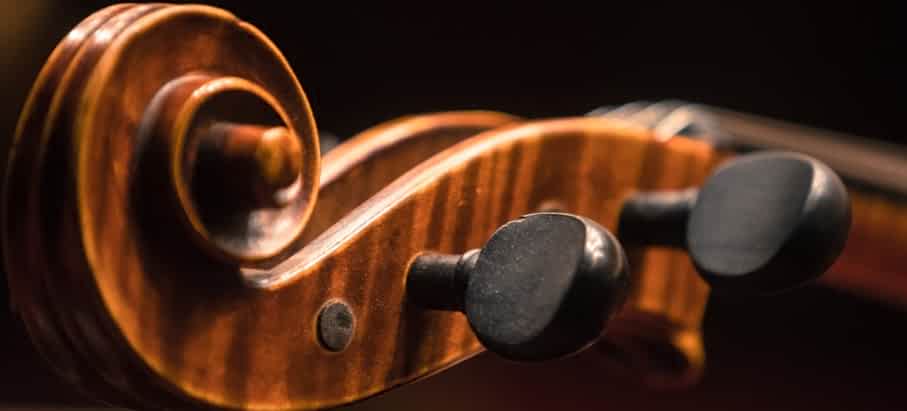







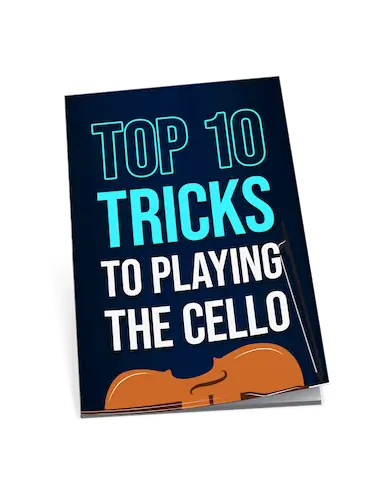
The article provides an excellent overview for beginners on the importance of proper tuning and the tools available. However, I feel an opportunity was missed to delve deeper into the historical context of cello tuning practices and how they’ve evolved. Understanding the traditional methods used by masters of the past could provide valuable insights into the instrument’s capabilities and nuances that modern digital tools might not fully capture.
So much effort just to tune a cello, meanwhile us viola players get it right without breaking a sweat. Maybe if cellos weren’t so oversized, they’d be easier to manage, no?
Regarding the use of a tuning fork mentioned in your article, Carina , it’s an age-old technique that indeed offers precision. However, it’s worth noting for readers that achieving the perfect pitch might require a more nuanced ear. Particularly intriguing is how this method, while traditional, complements the technologically advanced tools like digital tuners. A nice highlight on blending the traditional with the modern.
The section on humidity’s effects on cello tuning caught my eye. It’s something many players might not consider but is super crucial for maintaining sound quality. Carina , maybe a follow-up on how to best control humidity for cellos would be beneficial.
AnnaB, that’s a start, but consider using a humidifier or dehumidifier in the room, depending on your area’s climate.
So, would keeping my cello in its case when I’m not playing help with humidity?
Regarding tuning by ear, it’s an essential skill but can be quite challenging for beginners. I find that using a digital tuner in conjunction helps improve one’s ear over time. Furthermore, I’d argue that understanding the physics behind how a cello produces sound can significantly enhance one’s tuning accuracy. Thoughts?
Tuning’s such a critical part of playing, no? I found the mention of humidity and its effects super interesting. Living in a pretty damp area, I’ve seen firsthand how it messes with string tension and overall sound quality. Keeping an eye on that humidity level is key. Also, the bit about the soundpost – who knew such a small part played such a huge role in sound projection and quality? This article’s a goldmine for folks looking to get all the deets on their instrument. Kudos!
didn’t know the soundpost was that important. cool info.
Really appreciate this guide, especially the tuning part. My kid just started cello lessons and tuning’s been a bit of a mystery for us. Gonna use a digital tuner like you suggested. Thanks for breaking it down!
Digital tuners are a lifesaver for beginners. Glad you found the guide useful!
hey, i’m kinda confused about the fine tuners part. how do u know when it’s just right? sometimes i feel like i’m turning them too much :/
Hey Carina , quick question on the humidity part – you mentioned it affects tuning, but can you give examples of how to manage my cello in different seasons? I’m always struggling with this during the transition months. Thanks!
TimothyS, thanks a ton! I’ll definitely give those tips a try. Really appreciate it!
Hey LaraBee, but I’ve found using a humidifier in the dry months and a dehumidifier during the humid season really helps. Also, never leave your cello near heaters or air conditioners. Hope that helps!